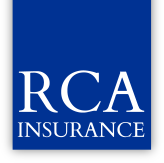 In 2006 Medicare began providing coverage for prescription drugs to Medicare Eligible beneficiaries with the implementation of Medicare Part D. Unlike Parts A and B, which are directly funded and administered by the federal government (Center for Medicare & Medicaid Services), Medicare Part D plans are offered by private insurance companies. However, these plans are regulated and subsidized by CMS. CMS sets the base coverage limits that each plan must follow but allows the insurance carriers to set up their own plans within these limits. Although plans must meet CMS approval, these private insurance carriers may set their own premiums, copay structures and formularies. Because there are many carriers and a variety of plans available from which to choose from, no one plan is suited for everyone.
In 2006 Medicare began providing coverage for prescription drugs to Medicare Eligible beneficiaries with the implementation of Medicare Part D. Unlike Parts A and B, which are directly funded and administered by the federal government (Center for Medicare & Medicaid Services), Medicare Part D plans are offered by private insurance companies. However, these plans are regulated and subsidized by CMS. CMS sets the base coverage limits that each plan must follow but allows the insurance carriers to set up their own plans within these limits. Although plans must meet CMS approval, these private insurance carriers may set their own premiums, copay structures and formularies. Because there are many carriers and a variety of plans available from which to choose from, no one plan is suited for everyone.
There are two ways a Medicare beneficiary can get Part D coverage: by enrolling in an Individual Medicare Part D plan (PDP), or by enrolling in a Medicare Advantage Plan with Part D coverage (MA-PD).
Medicare Part D coverage can be confusing and complicated so make sure you work with an agent who is licensed and certified to represent many carriers. At Richard C. Ahern Insurance, LLC, we pride ourselves on providing unbiased advice. .The following are a number of important questions and answers that will guide you toward the plan that might suit your needs:
What is the Standard Part D plan?
In addition to your monthly premium the 2022 costs for Part D coverage are:
An initial $480 deductible.
After meeting the deductible, the beneficiary pays a copay towards the cost of covered prescription drugs, until $4,430 in total drug cost is reached. This is called the initial coverage limit.
Once the initial coverage limit is reached, the beneficiary falls in the Coverage Gap. Historically, the member would have had to pay the full cost of drugs until reaching a total out-of-pocket of $7,050 (in 2022) - this includes the costs of the deductible and coinsurance as well as costs incurred during the gap. In 2022, you will pay 25% of the total cost for brand name prescriptions and the total cost for generic prescriptions while in the Coverage Gap.
Once you have reached the out-of-pocket maximum, you qualify for "Catastrophic Coverage" and will pay $3.95 for a generic drug and $9.85 for other drugs, or a flat 5 percent co-insurance, whichever is greater.
How do I pick a plan?
Picking a Medicare Drug Plan is not easy. Consideration should be given to a variety of factors before you can determine which plan is best suited for your specific needs. There are two ways a Medicare beneficiary can get Part D coverage.
- By enrolling in an Individual Medicare Prescription Drug Plan (PDP)
- By enrolling in a Medicare Advantage Plan with Prescription Drug coverage (MA-PD).
PDP(s) are individual free-standing drug plans intended to provide prescription coverage for Beneficiaries who received their hospital and medical benefits from original Medicare, an employer, Union, Medicare Cost Plan, or Medicare Private-Fee-for-Service without prescription drug coverage.
MA-PD(s) are Medicare approved health plans that combine a beneficiary’s hospital, medical, and prescription drug coverage all into one plan.
Once a beneficiary decides which type of plan is best for them, there are similar decisions to be made in selecting a specific plan.
First, you make a list of the medications you are taking: the name, dose or strength of each, and how often (how many times a day) you take each medication.
After you make the list, decide what factors with your prescription coverage are important to you. Here are some things to consider:
- Do you want a plan with or without deductible? Are you willing to pay a higher premium for increased benefits?
- Do you need a plan just for emergencies? If so you may want to consider a low premium plan that meets the creditable coverage requirement to avoid the Part D penalty and provides good coverage.
- Do you take multiple medications? If so, you will need to enroll in a plan that will provide you with the best overall coverage that is within your budget.
- Are your medications covered under the plan’s formulary?
- Do you travel a lot or spend a good part of the year in two or more locations? If so, you may want a PDP that is known nationally.
Am I eligible for Part D?
Anyone with Medicare Part A and/or Part B can join a Medicare PDP. If you choose to get your prescription coverage as part of a Medicare Advantage Plan you would need to have both Part A and Part B.
Please refer to our section on Medicare Part C for more information regarding Medicare Advantage Plans.
Can I extend benefits before reaching the Coverage Gap?
 Below are a few suggestions that may lower the total cost of your medications which could increase the value of the initial coverage limit before you coverage gap.
Below are a few suggestions that may lower the total cost of your medications which could increase the value of the initial coverage limit before you coverage gap.
Checking into alternative brand name prescriptions and/or switching to generics : Be sure to speak with your doctor first about using generic and/or over-the-counter (OTC) drugs. Ask your doctor if your medication has a generic available. If not, ask if there is a similar medication that would be suitable that you can take that does have a generic available.
Use the mail-order programs: Most PDP(s) and MA-PDs have mail order programs that allow you to get a 90 day supply of your maintenance medications at a discounted price. Getting your prescriptions filled through a mail-order program can save you hundreds of dollars a year in out of pocket cost with discounted copays.
Utilize a local retail pharmacy who offers a Generic Drug Program. Some pharmacies that offer such a program are: Wal-Mart, Target, Rite Aid, CVS, and Stop & Shop. These programs allow you to purchase 30 day supplies of commonly prescribed generic medications for as low as $4 for a one month supply and as low as $10 for a 90 day supply. (Check with each pharmacy to see their rates and conditions. Drug lists are subject to change, please check with pharmacy before purchase. Membership may be required).
If you do eventually fall into the coverage gap there may be assistance programs available to help you pay for the cost of your medications. If this is your situation, please call us and we can provide you with additional information.
When can I Enroll in a Plan?
There is a limited time frame during the year when you can make a decision to enroll in a Medicare Supplement plan, Medicare Advantage plan or PDP. They are:
- The Initial Enrollment Period (IEP) - When you first become eligible for Medicare there is a 7 month period you can enroll in a plan.
- You can enroll in plan 3 months prior to the month of your Medicare effective date (usually the month of your 65th birthday), the month of your 65th Birthday or Medicare eligibility, or 3 months after you first become eligible for Medicare.
- If you qualify for Medicare due to a disability you have this same 7 month period to join a plan around the month Medicare becomes effective. Those with disabilities will also have this enrollment period around the month of their 65th birthday.
Generally, a person is “locked in” with the plan they choose for the calendar year. To join, change, or drop a plan outside of these enrollment periods, a person would need to qualify for a Special Election Period (SEP).
What if I choose not to enroll?
Enrollment in a plan is voluntary for most Medicare beneficiaries (beneficiaries who qualify for Medicare Extra Help may be required to join a plan ).
It is important to be aware: if a person chooses not to enroll in a plan when eligible and does so in the future, they will be charged a penalty for late enrollment. This is a lifelong penalty that will follow the beneficiary with each plan they enroll in.
The penalty is assessed by adding additional cost onto the premium of the plan the person enrolls. The penalty is 1% of the average plan premium per month that they were not enrolled in a plan.
Can I get help to pay for my Part D Plan?
Yes, there are both State and Federal programs available to qualified Medicare Beneficiaries with low incomes to help pay both the premiums of their PDP and cost (under a MA-PD) for their prescriptions.
The Federal program is known as Medicare Low Income Subsidy (LIS) or “Medicare Extra Help”. LIS provides assistance in paying for:
- Monthly Part B Premium
- Yearly Deductible
- Prescription copayments and/or coinsurance charges (a beneficiary will only have to pay $3.70 for a generic and $9.20 for a brand)
LIS will also cover prescriptions while a beneficiary is in the Coverage gap.
It is important to note, Medicare Extra Help will only cover a prescription that is listed on the PDP’s or MA-PD’s formulary and covered by the PDP/MA-PD first. So, LIS will NOT cover a medication that is not the PDP/MA-PD’s formulary or denied by the PDP/MA-PD because of certain coverage limitations and/or prior authorization requirements.
Low income subsidy
If you qualify for extra help with your Medicare prescription drug plan costs, your premium and costs at the pharmacy will be lower. When you join a plan, Medicare will tell you how much extra help you are getting.
How to inquire about Low Income Subsidy
If you are not getting this extra help, you can see if you qualify by calling Social Security at 1-800-772-1213 (TTY users should call 1-800-325-0778) or visit www.socialsecurity.gov on the Web.
You may also go to the Connecticut Department of Social Services for more information.
For a printable version of the Medicare Savings Program Application/Redetermination form click here.
Please contact us for more information and to schedule a consultation.
 In 2006 Medicare began providing coverage for prescription drugs to Medicare Eligible beneficiaries with the implementation of Medicare Part D. Unlike Parts A and B, which are directly funded and administered by the federal government (Center for Medicare & Medicaid Services), Medicare Part D plans are offered by private insurance companies. However, these plans are regulated and subsidized by CMS. CMS sets the base coverage limits that each plan must follow but allows the insurance carriers to set up their own plans within these limits. Although plans must meet CMS approval, these private insurance carriers may set their own premiums, copay structures and formularies. Because there are many carriers and a variety of plans available from which to choose from, no one plan is suited for everyone.
In 2006 Medicare began providing coverage for prescription drugs to Medicare Eligible beneficiaries with the implementation of Medicare Part D. Unlike Parts A and B, which are directly funded and administered by the federal government (Center for Medicare & Medicaid Services), Medicare Part D plans are offered by private insurance companies. However, these plans are regulated and subsidized by CMS. CMS sets the base coverage limits that each plan must follow but allows the insurance carriers to set up their own plans within these limits. Although plans must meet CMS approval, these private insurance carriers may set their own premiums, copay structures and formularies. Because there are many carriers and a variety of plans available from which to choose from, no one plan is suited for everyone.
There are two
 Medicare is a Health Insurance Program for:
Medicare is a Health Insurance Program for:
 Medicare Part A helps cover care in hospitals as an inpatient, critical access hospitals, skilled nursing facilities (not custodial or long-term care), hospice care, and some home health care.
Medicare Part A helps cover care in hospitals as an inpatient, critical access hospitals, skilled nursing facilities (not custodial or long-term care), hospice care, and some home health care.
 In 2006 Medicare began providing coverage for prescription drugs to Medicare Eligible beneficiaries with the implementation of Medicare Part D. Unlike Parts A and B, which are directly funded and administered by the federal government (Center for Medicare & Medicaid Services), Medicare Part D plans are offered by private insurance companies. However, these plans are regulated and subsidized by CMS. CMS sets the base coverage limits that each plan must follow but allows the insurance carriers to set up their own plans within these limits. Although plans must meet CMS approval, these private insurance carriers may set their own premiums, copay structures and formularies. Because there are many carriers and a variety of plans available from which to choose from, no one plan is suited for everyone.
In 2006 Medicare began providing coverage for prescription drugs to Medicare Eligible beneficiaries with the implementation of Medicare Part D. Unlike Parts A and B, which are directly funded and administered by the federal government (Center for Medicare & Medicaid Services), Medicare Part D plans are offered by private insurance companies. However, these plans are regulated and subsidized by CMS. CMS sets the base coverage limits that each plan must follow but allows the insurance carriers to set up their own plans within these limits. Although plans must meet CMS approval, these private insurance carriers may set their own premiums, copay structures and formularies. Because there are many carriers and a variety of plans available from which to choose from, no one plan is suited for everyone. Below are a few suggestions that may lower the total cost of your medications which could increase the value of the initial coverage limit before you coverage gap.
Below are a few suggestions that may lower the total cost of your medications which could increase the value of the initial coverage limit before you coverage gap.
